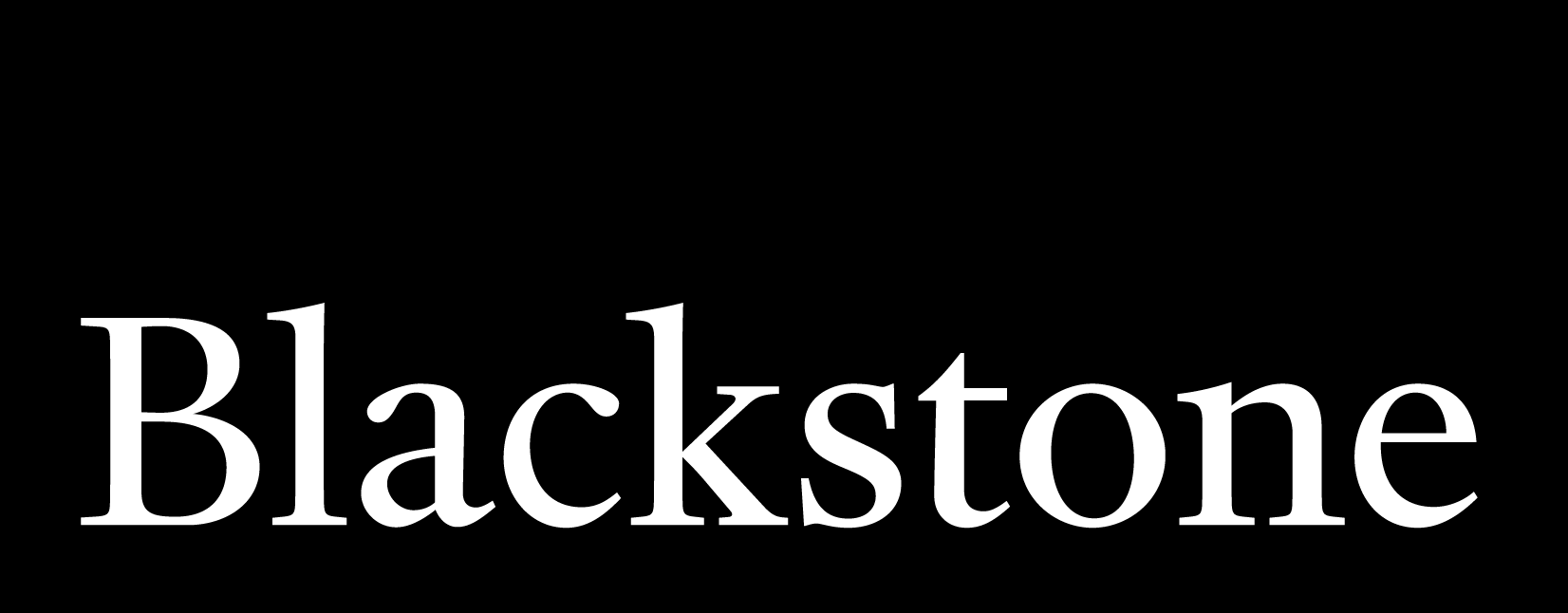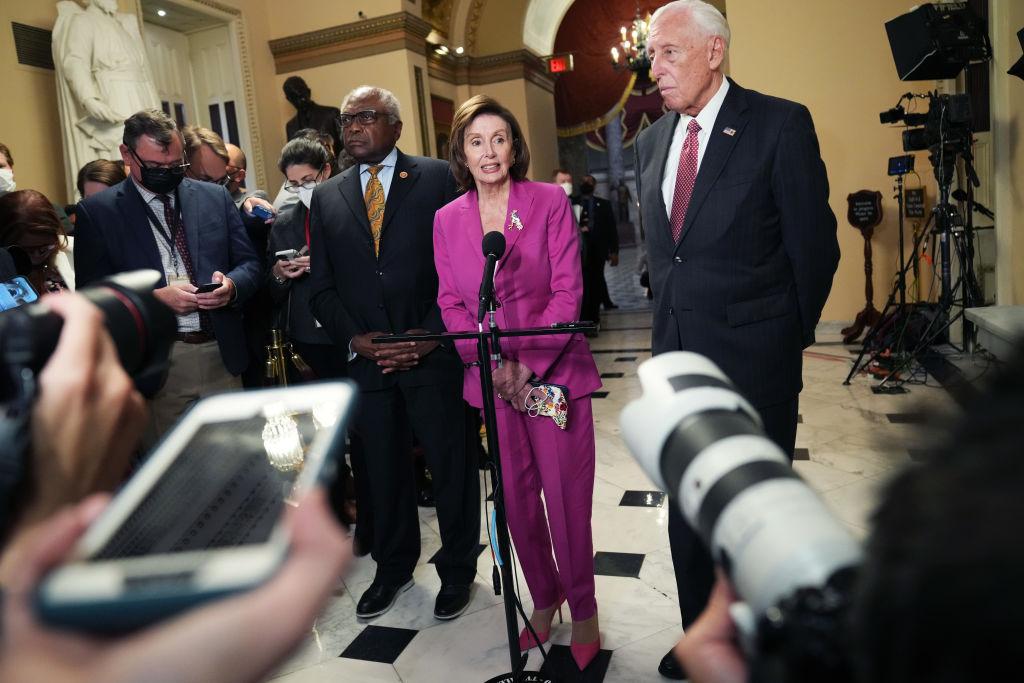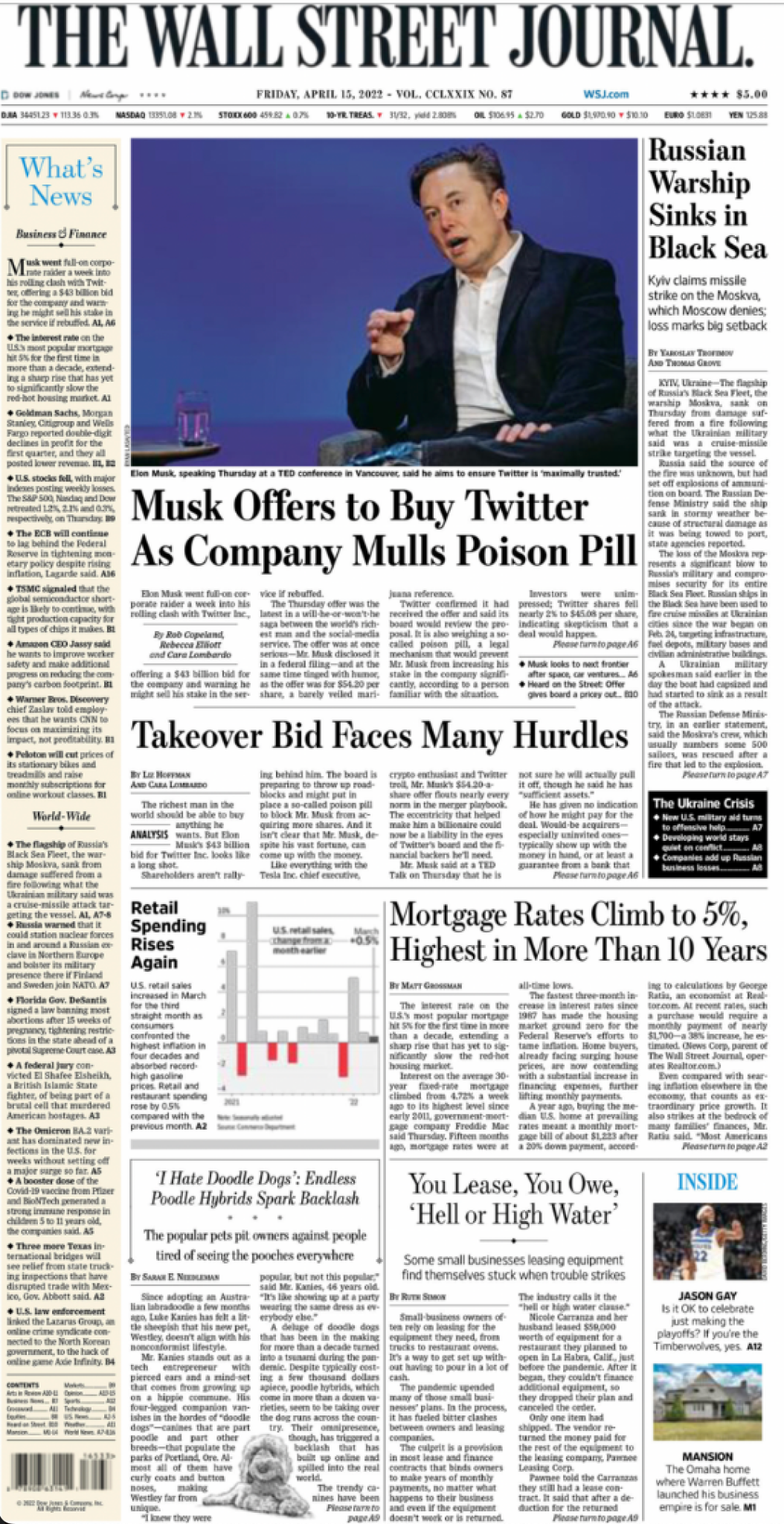PRESENTED BY

BY JOHN BRESNAHAN, ANNA PALMER, JAKE SHERMAN AND HEATHER CAYGLE
WITH MAX COHEN AND CHRISTIAN HALL
THE TOP

Happy Friday morning.
The November elections are likely to bring big changes to the power structure in the House. This is especially true for House Democrats, with the potential departure of Speaker Nancy Pelosi after two decades leading the caucus.
We’ve spent several days talking to lawmakers and senior staffers from all corners of the caucus. Here’s what we found:
Six questions about House Democratic leadership in 2023
1) Does Pelosi stay or go? Everything that happens inside the House Democratic leadership hinges on the answer to this question. Speaker Nancy Pelosi is unparalleled in Washington – she’s the first female speaker; she won the speaker’s gavel only to lose it and then gain it back again; and she’s led the House Democratic Caucus since 2003.
Most House Democrats have no idea what it’s like to serve under any other leader. Pelosi remains their biggest fundraiser by a long shot and is still – by far – the biggest draw for House Democrats.
But the dynamics in Congress have changed. With members capitalizing on social media and online fundraising to build their own national followings, it has become harder for leaders in both parties to maintain the ironclad grip they once had. Pelosi was forced to cut a term-limits deal in 2018 in order to return to the speaker’s chair. Pelosi, 82, previously said this would be her last term as Democratic leader, although she’s gotten testy this Congress when reporters have followed up on that question.
Pelosi is likely to leave if Democrats lose the House. That much seems clear.
What if Democrats buck the odds and keep the House? That’s an entirely different question, of course. And at that point, it’s Pelosi’s choice entirely whether to stay or go, and speculation about what she’d do is just that – speculation.
2)What do Steny Hoyer and Jim Clyburn do? There’s a simple way to think about the triumvirate that’s run the House Democratic Caucus since 2006 – they’re one giant entity.
As we mentioned above, if Democrats – against all the odds – retain control of the House in November, then the leadership trio of Pelosi, Majority Leader Steny Hoyer and Majority Whip Jim Clyburn just keep rolling on for as long as they can. If Democrats lose, there’s some chaos while everything shakes out.
Hoyer first became part of the Democratic leadership more than 30 years ago when he was tapped as caucus chair. For the last 20 years, Hoyer has dutifully served as Pelosi’s No. 2, while making no secret about one day wanting the top job. Hoyer is well liked and respected across the ideological spectrum of House Democrats, and he has numerous chits to cash in if he were to run to succeed Pelosi.
But it’s likely one, or possibly multiple Democrats, would challenge Hoyer if he launches a bid for Democratic leader. That race could get very messy. Hoyer could run for a different leadership post – something to keep him at the table. Our takeaway is this: Hoyer isn’t certain to retire if Democrats lose their majority. He’s at the U.S.-Mexico border today after leading a codel to Eastern Europe last week.
Hoyer’s lengthy leadership career works both for and against him in that scenario. Yes, Hoyer has vast experience and could provide a guiding hand to a caucus in the midst of a big change. Yes, there’s a lot of loyalty toward Hoyer following his many years in leadership. But this is also a caucus agitating for new leadership after so many years under the same top three. “If not now, when?” is a refrain we heard multiple times this week from Democrats.
Clyburn, 81, hit his political apotheosis during the 2020 presidential campaign. His support was vital in helping Joe Biden win the South Carolina Democratic primary, a turning point for the presidential contest. Clyburn remains influential within the Democratic Caucus – especially the powerful Congressional Black Caucus – and has chafed at the suggestion that he would leave just because Pelosi agreed to term limits for herself. Like Hoyer, Clyburn could seek to remain at the leadership table in a post-Pelosi world.
3) Let’s talk about ‘The New Three.’ If Pelosi, Hoyer and Clyburn are “The Big Three,” then we’re describing Caucus Chair Hakeem Jeffries, Assistant Speaker Katherine Clark and Caucus Vice Chair Pete Aguilar as “The New Three.”
We expect that Jeffries, Clark and Aguilar (in that order) will likely be the next triumvirate of House Democratic leadership when there’s a generational change at the top.
To be clear, they’re all individually preparing for the possibility by doing their own fundraising, campaign travel and member outreach. But there was a sense from nearly every Democrat we talked to that these three realize that they’re stronger together. And there won’t be any attempt by one to challenge the other or support someone else running against a member of the trio.
The question that came up time and again in our reporting is what will Jeffries do? As caucus chair, he’s in one of a handful of Democratic leadership positions that are term-limited. But allies of the New York Democrat fully expect him to remain in leadership in some capacity. Jeffries would never challenge Pelosi. But we wouldn’t be surprised if he entered the race against Hoyer for minority leader. For many, he’s the next party leader after Pelosi.
4) What does Adam Schiff do? Schiff is weighing a bid for speaker if House Democrats keep the majority and Pelosi exits, or minority leader if Democrats end up out of power, according to sources close to the California Democrat.
In fact, Schiff is so interested in moving up that he’s already having conversations with Democratic colleagues about these possibilities. Several insiders took particular notice when Schiff made an appearance at the New Democrats’ retreat recently. Schiff is a big fundraiser – he has $18 million on hand – so he checks that box. He’s also close to Pelosi.
There are some critical questions surrounding a potential leadership bid by Schiff. The main issue that comes up is whether Schiff has a base of support deep enough to mount a run against Jeffries, Hoyer or both. Several Democrats we talked to also wondered whether Schiff really wants to stay in the House or if it’s just a stepping stone to bigger ambitions – such as running for Senate. But we were told that the House seems more appealing at this moment for Schiff than the Senate.
5) What does the rest of House Democratic leadership look like? If Democrats lose the House, there will be a massive reshuffling of their entire leadership hierarchy. That includes several secondary posts such as Democratic Caucus chair and vice chair. In that scenario, Rep. Joe Neguse (D-Colo.) is widely considered the frontrunner to become caucus chair. Neguse has been in leadership since coming to Congress, first as the freshman representative and now as a chair of the Democratic Caucus’ messaging arm.
Rep. Debbie Dingell (D-Mich.) is the frontrunner to become caucus vice chair, several insiders said. But that race is likely to get more crowded, with Reps. Madeleine Dean (D-Pa.) and Ted Lieu (D-Calif.) also expected to run. Dingell and Lieu, along with Rep. Matt Cartwright (D-Pa.) and Neguse, co-chair the Democratic Policy and Communications Committee.
And then there’s the Jayapal factor. Congressional Progressive Caucus Chair Pramila Jayapal (D-Wash.) stirred up controversy in recent months by talking to colleagues about running for a caucus-wide position, possibly even challenging Clark. Jayapal has never been shy about having leadership ambitions beyond the CPC. But the choice seemed odd to many Democrats given that Clark is also a CPC member. Several Democrats told us they still expect Jayapal to run for a leadership position after the midterms but now aren’t sure which one.
6) What happens to the committee chairs? If Democrats lose the House, Republicans are poised to launch a wave of investigations into the Biden administration and the presidents’ family, especially Hunter Biden. House Democrats will be the frontline for Biden’s defense if that occurs. However, there’s already grumbling within the caucus that some current committee chairs may not be aggressive enough to fend off GOP attacks.
Unlike Republicans, Democrats don’t have term limits for their committee leaders. And the caucus generally tends to weight seniority more than other attributes when considering candidates for top committee posts.
Another factor to consider here – There’s an entire generation of ambitious Democrats waiting for their turn at turn to shine due to the seniority bottleneck, both on committees and within the upper ranks of leadership. That pent-up demand will be felt everywhere across the caucus, including committees.
How much change can happen in a caucus that’s been governed the same way, with the same rules for decades? We wouldn’t be surprised if younger members push for term limits, at least for committee positions, and also move to install different lawmakers atop certain panels. Judiciary and Oversight and Reform will be two committees to watch.
PRESENTED BY BLACKSTONE
Blackstone is investing to help power sustainable growth. This means partnering with the companies building a more prosperous, greener economy. They’re investing in renewable energy assets across the world, backing businesses that offer plant-based alternatives, and helping their portfolio companies reduce carbon emissions.
MORE ABOUT THE HOUSE GOP
The House Republican women on the rise
The House Republican Conference has long had a problem: It has far too many white men. The leadership has recognized this shortcoming for more than a decade. In recent years, more GOP minority and women lawmakers have been elected than ever before.
But it’s worth noting that if Rep. Elise Stefanik (R-N.Y.) takes a pass on running for House Republican Conference chair or whip during the next Congress, it will leave a gaping hole in the leadership. There will be women running Appropriations, Energy and Commerce and other key panels in a GOP majority, but possibly none in elected leadership – if Stefanik isn’t part of the mix.
So we wanted to take a moment to lay out some of the other up and coming women who could have big roles in the House GOP going forward.
| → | Rep. Kat Cammack (R-Fla.) Cammack, 34, has impressed leadership during her one term in the House. Cammack – herself a former Hill aide – serves on the Homeland Security and Agriculture committees. But Cammack has made an internal play for a seat on the Energy and Commerce Committee, which will be ground zero for the GOP’s inquest into technology companies. Cammack’s name has also been batted about for chair of the Republican Study Committee. |
| → | Rep. Ashley Hinson (R-Iowa) You can’t have a conversation about up-and-comers in Hill GOP circles without hearing Hinson’s name. The first-term Republican knocked off a Democratic incumbent in 2020 and has raised piles of money since taking office. Hinson has nearly $1.6 million on hand. Could Hinson run for GOP conference chair if Stefanik steps out of leadership? |
| → | Rep. Jackie Walorski (R-Ind.) Walorski, a 10-year veteran of Congress, is currently serving as ranking Republican on the House Ethics Committee, the closest thing to a hardship assignment in Congress. But Walorski has been “leadership curious” in the past, and in a new world order, perhaps she can be brought back into the fold. |
| → | Rep. Young Kim (R-Calif.) Kim is a close ally of House Minority Leader Kevin McCarthy and flipped a district from blue to red. Some have mentioned her as a possible conference secretary. |
| → | Rep. Julia Letlow (R-La.) Letlow doesn’t seem to have designs on leadership, but top Republicans say she’s likely to score a seat on the Appropriations Committee in the next Congress. |
| → | Rep. Debbie Lesko (R-Ariz.) Senior House Republican sources tell us that Lesko is one of the few people in the conference able to move between hardline conservative and the few remaining GOP moderates. Giving Lesko a seat at the table could be a good move from a leadership trying to quell any concerns from the right. |
Also: We neglected to mention Thursday that Rep. Bill Huizenga (R-Mich.) wants to be Financial Services chair if Rep. Patrick McHenry (R-N.C.) runs for leadership. Thanks to the roughly one million people who emailed us to point that out.
DOWNTOWN DOWNLOAD
| → | Stripe, the payment processing company, has inked a lobbying contract with Boundary Stone Partners to lobby on “[c]arbon removal technologies and related legislation.” |
PRESENTED BY BLACKSTONE

Blackstone is accelerating the growth of companies backed by visionary leaders who are building a more prosperous, greener economy. Learn More.

| → | Sen. John Kennedy (R-La.), who is up for re-election, reported raising $5.3 million in the first quarter of 2022 and has $13.9 million on hand. |
| → | DNC Chair Jaime Harrison transferred $25,000 from his campaign account to the South Carolina Democratic Party. Harrison ran against Sen. Lindsey Graham (R-S.C.) last cycle. |
| → | Former Speaker John Boehner’s political action committee gave $5,000 to the NRSC and donated $2,500 to Rep. Patrick McHenry (R-N.C.). |
FRONTS


MOMENTS
President Joe Biden is at Camp David.
10:40 a.m.: Vice President Kamala Harris will meet with Tanzanian President Samia Suluhu Hassan.
CLIP FILE
NYT
| → | “Jan. 6 Panel Presses Stephen Miller on Whether Trump Sought to Incite Crowd,” by Maggie Haberman and Luke Broadwater |
| → | “C.I.A. Director Airs Concern That Putin Might Turn to Nuclear Weapons,” by David Sanger and Julian Barnes |
| → | “Gina McCarthy, Top Climate Adviser, Is Said to Be Planning Departure,” by Lisa Friedman and Coral Davenport |
WaPo
| → | “Russia warns U.S. to stop arming Ukraine,” by Karen DeYoung |
| → | “Russia finds sympathy in Germany’s east, Putin’s old stomping ground,” by Isaac Stanley-Becker and Vanessa Guinan-Bank in Dresden, Germany |
| → | “Amtrak moves to seize control of Union Station,” by Luz Lazo |
WSJ
| → | “Citadel’s Griffin Rises as Top GOP Donor, Urges Business Leaders to Join Him,” by John McCormick in Chicago |
| → | “Biden to Nominate Michael Barr as Top Fed Banking Regulator,” by Andrew Restuccia and Andrew Duehren |
| → | “David Zaslav Wants to Distinguish CNN From ‘Advocacy Networks,’” by Joe Flint |
Bloomberg
| → | “Twitter Is Weighing a Poison Pill Defense to Thwart Elon Musk’s Takeover Bid,” by Sarah Frier and Scott Deveau |
| → | ”Xi Moves to Stop Shanghai Covid Rage From Sweeping Across China,” by Colum Murphy and Krystal Chia |
LAT
| → | “‘A big win’: New contract gives grocery workers their biggest pay raises in decades,” by Margot Roosevelt |
PRESENTED BY BLACKSTONE
Blackstone focuses on investing in sectors and companies with the greatest potential for growth – like those powering a more sustainable economy. This means investing in renewable energy assets across the world, backing businesses that offer plant-based alternatives, and helping portfolio companies reduce their carbon emissions.
Blackstone is partnering with the leaders of these companies, providing the resources they need to help accelerate their sustainable growth. They take a long-term approach to investing because building successful, resilient businesses can lead to better returns for investors, stronger communities, and economic growth that works for everyone. Learn more.
Editorial photos provided by Getty Images
You’ve probably flown with us. You just didn’t know it. Our engines have logged more than 500 million flight hours globally – helping people to get where they need to be, reliably and safely every time. Learn more

Crucial Capitol Hill news AM, Midday, and PM—5 times a week
Join a community of some of the most powerful people in Washington and beyond. Exclusive newsmaker events, parties, in-person and virtual briefings and more.
Subscribe to Premium
The Canvass Year-End Report
And what senior aides and downtown figures believe will happen in 2023.
Check it outEvery single issue of Punchbowl News published, all in one place
Visit the archiveYou’ve probably flown with us. You just didn’t know it. Our engines have logged more than 500 million flight hours globally – helping people to get where they need to be, reliably and safely every time. Learn more









